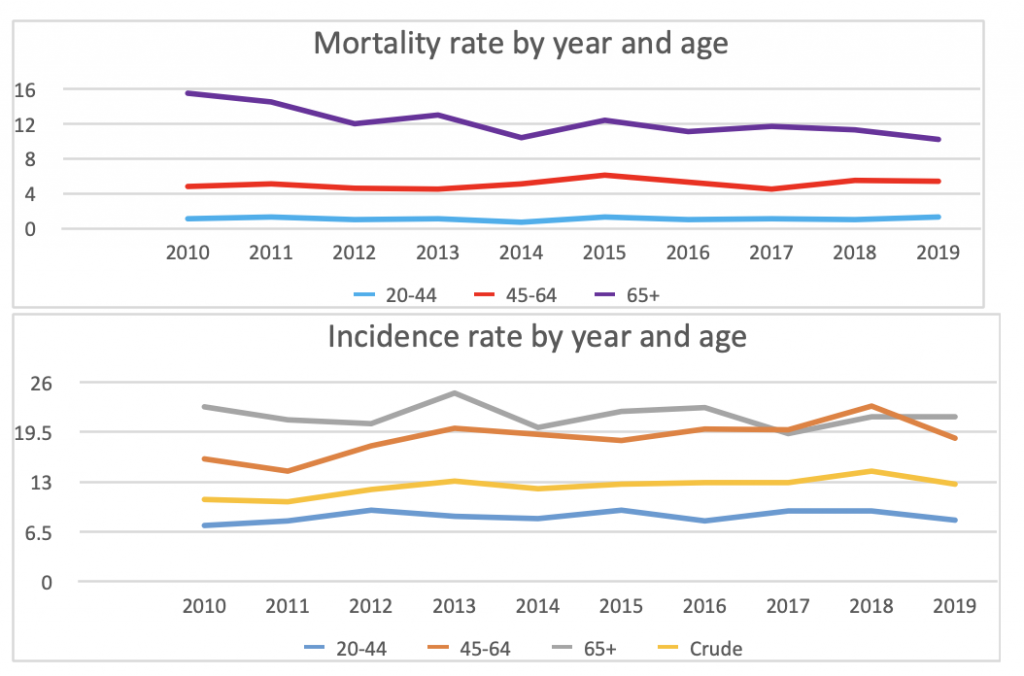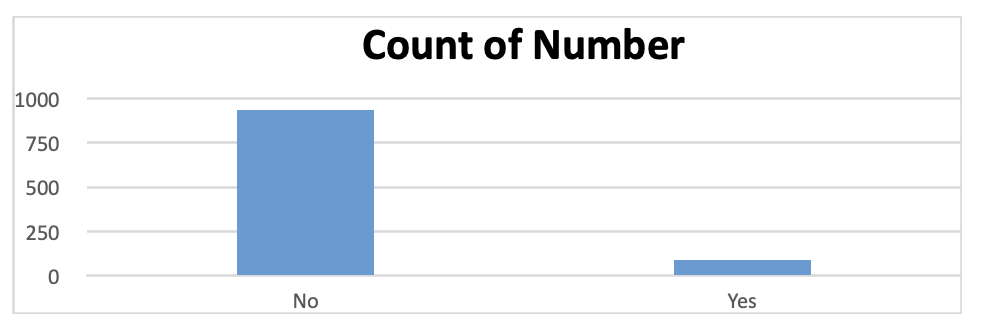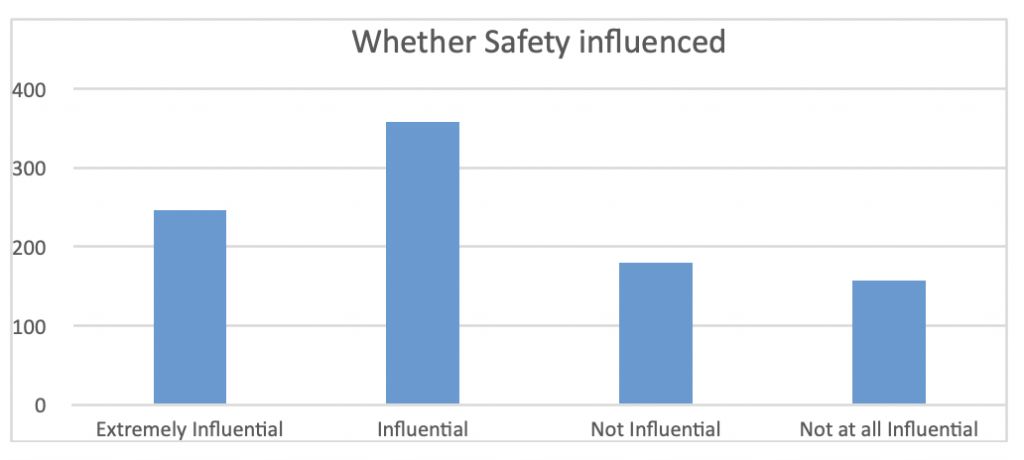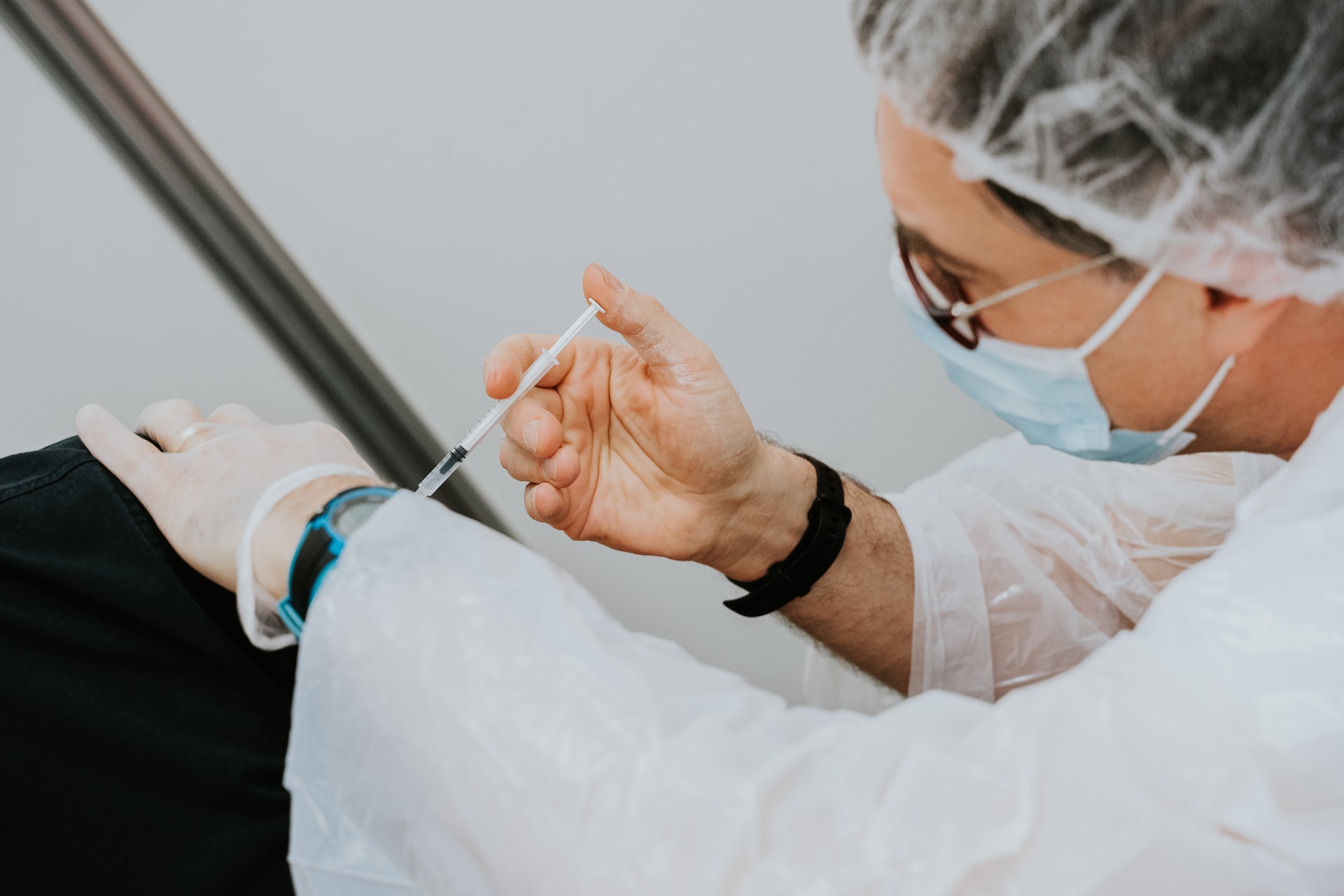
Author: Yichi Zhang
Mentor: Dr. Manuela Runge
High School Affiliated to Renmin University of China
Abstract
Our study is aimed to address to the problem of low HPV vaccine coverage rate among Hong Kong female citizens in different social levels. According to the Hong Kong Cancer Statistic Website, the prevalence and mortality rate of cervical cancer among Hong Kong female citizens does not show a decrease trend, which draws us the attention of the severeness of this disease. The key to solve the problem is to increase the HPV vaccine coverage rate among female citizens. Our analysis is carried out from three perspectives, including government, society and individuals. Each factors are analyzed from two opposite perspectives–enablers and barriers. Recommendations are also provided for dealing with the issue in the future. Improving the program coverage range, solving the high cost of HPV vaccine and promoting more information regarding the disease are at great necessity in dealing with this problem.
Keywords: human papillomavirus, HPV, vaccination, Hong Kong
Introduction
Cervical cancer, mostly caused by HPV, has high infection risk among woman. “Cervical cancer was the eighth commonest cancer among females in Hong Kong and accounted for 3.0% of all new cancer cases in females in 2019. In 2020, a total of 159 women died from this cancer, accounting for 2.6% of female cancer deaths.”(HP, Jan. 4th, 2022, “Cervical Cancer”). Female around the world are under the risk of getting cervical cancer, and from the statistic, this trend is continuous, which needs well treatment. Therefore, studying this topic is at great necessity. We specifically focused on Hong Kong as a target city to investigate the situation of HPV vaccination. And our main focus is mentioned below.
HPV vaccine is now designed and shows the effectiveness in curing cervical cancer. HPV has been a popular topic in Hong Kong, both attributed to the vaccine availability and promotion. Before the Covid-19 pandemic, thousands of people in the mainland traveled to Hong Kong annually to take vaccination because of the 9-valent vaccine availability. Since the 9-valent vaccine can be taken from age nine to forty five, It has been the most decisive factor that affects people’s preference of taking vaccine in Hong Kong. The rate of infection with HPV rapidly increases after thr first sexual intercourse. Therefore, only vaccine in Hong Kong can better prevent cervical cancer for high risked age group. Prevalence and mortality trends from cancer registry data in Hong Kong show a stable high rate. Therefore, it is important and necessary to draw more attention on this disease and promotion on the HPV vaccine, which is the most effective way for prevention. Addressing to cervical cancer’s severeness, its symptoms and consequence would be fatal. Moreover, the high risk of getting it makes it a more worth-study disease. Since HPV leads to 90% of cervical cancer, the necessity of taking HPV vaccination can effectively decrease the risk of getting this disease. Even though the HPV vaccination program in Hong Kong shows its advantage, its coverage rate is far less than it is supposed to have. As a result, finding out all these barriers and improve them can increase HPV vaccine coverage rate, and substantially reduce risk of cervical cancer. Also, knowing all enablers gives people a direction to further maintain and improve the actions towards cervical cancer prevention. In this article, we use statistics and information from related articles to analyze the enablers and barriers of HPV vaccination uptake among Hong Kong female citizens.
Methods
For the enablers, our article based on results reorganized from the questionnaires that were previously designed to find out factors that encourage people to take this vaccine. Factors are categorized from three social levels: government, society and family. We analyze how each level of the society can lead to people’s action to take vaccine. Based on the result, we come up with recommendations that can be taken in the future for maintaining such advantages. For barriers, we also analyzed from above three social levels. Aiming to find out factors that hinder people from taking the HPV vaccine. We stress advice and potential action society can take to improve the coverage rate.
Data on cervical situation in Hong Kong are collected from Hong Kong Cancer Statistic Center, and information regarding people’s attitudes are obtained from questionnaire answered by parents regarding HPV vaccine knowledge and attitudes towards vaccination uptake. Using these data, we analyze barriers from the family aspect.
The incidence rate and mortality rate from 2010 to 2019, people aging from 20 to 65+ perform a relatively stable trend. The rate are still high, and the situation does not see a obvious improvement even after the introduction of HPV vaccination. In order to decrease the incidence and mortality rate in the near future, the most urgent problem to solve is the vaccine coverage. (Fig 1)

Note. Fig1: A) Mortality rate by year and age. B) Incidence rate by year and age. Data source: Hong Kong cancer registry 2010-2019.

Overview of Enablers and Barriers
The main enablers and barriers from a Government perspective are related to promotion, health insurance schemes, students’ vaccine uptake programs. The main enablers and barriers from a societal perspective are vaccine availability in hospitals and clinics, and social environments on HPV vaccine uptake. The main factors affecting HPV vaccine uptake from families perspectives are people’s attitudes towards the vaccine cost, the awareness and concern about the vaccine safety and also the effectiveness of the HPV vaccine (Table 1). The following paragraphs address main enablers and barriers and recommendations for improved HPV vaccination uptake.
| Category | Enablers | Barriers | Recommendations |
| Government | -Information of vaccine safety -Promotion of vaccine programs | -Restricted age groups included in free programs -Limited promotion channels | -Include in health insurance to remove cost barrier -Enhance promotion of vaccine programs and information of disease in young generation through varying channels |
| Society | -The vaccine availability in hospitals and clinics. -Increasing amount of people paying attention on the vaccine -Advertisement made by private and public clinics on HPV vaccine availability | -Misunderstanding vaccine safety -High costs | -Advocacy through more cost-effectiveness studies to demonstrate benefit -Continue advertising the product to improve people’s recognition on the vaccine |
| Family | -Children who are in primary school take advantage from free vaccine program provided by the government. -More family members taking the vaccine may influence other members’ choice and confidence | -High costs -Long delay between disease prevention and risk of disease | -Encourage family members taking the vaccine to increase the confidence and credibility of the HPV vaccine -Learning more information about cervical cancer to understand the necessity and importance of taking the HPV vaccine |
Note. Table contents)information in the table is an overview to the structure and main discussion in the paper
Cost as an important factor for HPV vaccination
Enabler for young children, but barrier for older female.
This mainly comes from government and family levels. Hong Kong government has address HPV vaccine program through female citizens, especially children in primary school. The Centre for Health Protection announced in 2018 that from 2019 to 2020 school year, eligible female primary school students under suitable age will taken HPV vaccine under Hong Kong Childhood Immunisation Programme. This action can both be enabler but at the same time a barrier. Primary school children can be prevented from getting cervical cancer by being protected by HPV vaccine without any cost. Therefore, parents do not need to concern about the cost of the vaccine. As a result, this new generation can be protected almost without future risk of getting cervical cancer. Even though new generation can be protected, those who are already expired from eligible age groups are still risky. Since female at older age are not covered in such program, they have to pay extra money to take vaccine. However, the market price of the HPV vaccine is more than $7000, which is a burden for most families. This inconsistent relationship still exist and should be solved, or it will be a continuous barriers for people aged from 45 to 60 for at least many years. The further approach to include all aged group female into similar program needs to take into consideration.
Knowledge courses are needed and media outreach
Enabler for future but barrier currently
Government’s promotion can also act as a encouragement, letting more citizens be aware of cervical cancer and thus uptake HPV vaccine. Information regarding HPV is abundant in Hong Kong, and this can be seen from the public websites designed specifically for cervical cancer. Basic knowledge like symptoms, risk groups and treatments are available through Hong Kong HPV website and Hong Kong Cancer Statistic website. The simple access to such information is for sure an enabler for citizens to attach HPV vaccine. Furthermore, since many people each year come from the mainland to Hong Kong to get the HPV vaccine, we found that online registers are available and easy to find. Government’s attention and promotion related to cervical cancer risk and prevention can play an important role in turning the course of the currently increasing worrying disease’s situation.
After the survey of finding out the proportion of people never heard of HPV vaccine before, it shows that only few people never heard before. (Fig 2) Therefore, it shows that HPV vaccine is famous in Hong Kong, and most people at least have some knowledge about it. This will create a positive environment for improving HPV vaccination program and increasing protection among female citizens in Hong Kong at risk of cervical cancer.

Aiming to analyze factors influencing HPV vaccination uptake, it is essential to understand the overall situation of cervical cancer prevalence among different age groups in Hong Kong. Based on our data collected, the following results are specifically address to parents and children. We hope that by analyzing this group of people, we can inform improvements for future HPV vaccination programs to increase vaccination coverage, hence reduce cervical cancer incidence and mortality among the whole population at risk(female citizen in Hong Kong)
The first factor is the consideration of safety of HPV vaccine. From the result provided by parents, most of them hold that the safety is a influential factor that affect their decision on vaccine uptake. Still many people care about this factor is partially attributed to the uncovering range of HPV vaccine, which wipes out people’s confidence. From experiment carried out before testing the safety of 9-valent HPV vaccine, the result is optimistic– “Administration of a 3-dose regimen of 9vHPV vaccine to adolescent girls and young women 12-26 years of age who are prior qHPV vaccine recipients is highly immunogenic with respect to HPV types 31/33/45/52/58 and generally well tolerated.” Therefore, it is known that it is people themselves do not understand the safety of HPV vaccine, but not the problem of the vaccine. As a result, doing more promotion on HPV vaccine’s security is necessary to improve the vaccine coverage rate. The effectiveness can also be ensured based on previous study, “ The 9vHPV vaccine prevented infection and disease related to HPV-31, 33, 45, 52, and 58 in a susceptible population and generated an antibody response to HPV-6, 11, 16, and 18 that was noninferior to that generated by the qHPV vaccine.” As a result, the promotion is now the most essential. (Fig 2)

Figure 3. Whether Safety Influenced. Whether the effectiveness influenced

Note. Fig 2: A) Whether Safety is influenced B) Whether the effectiveness influenced
Another factor comes to people’s worries on cost. From Fig X, it shows that more than half of respondents really cares about the cost of HPV vaccine. This result shows the proportion that I previously imagined since the government now provides primary school students’ free uptake of HPV vaccine. Therefore, only about half of people really care about the price. However, for other aged group, the proportion of influential would be much higher. If this vaccine cost a lot, it becomes a burden for most of people, and therefore discourages people to take the dose. Moreover, from the data collected through the internet, we found that HPV vaccine are taken mostly in private clinic in Hong Kong for people not benefit from the program, priced from $6630 to $7800 for total three doses of 9-valent HPV vaccine. This is a huge expense for many family. Therefore, it is a problem of cost that hinders many family from getting their daughters vaccinated.
Even though the government now provides a program that enables primary school students take this vaccine for free, but the coverage rate can be hard to increase since other aged groups are not included in this program and cost is still a concern for most of them. In conclusion, the cost is still a barrier for most aged group people. Government can consider adding this program into people’s health insurance. But this still needs a long way to go since it need to include several factors, including the cost-effectiveness and governments’ budget. however, it is said that the current cost-effectiveness is maximized according to total benefit analysis by several studies. “This analysis predicts that the current HPV vaccination strategy can be considered cost-effective and will provide maximum health benefit.” Thus, this potential solution need to think about whether the total benefit can be retained. The balance between them need to be considered.
Moreover, government’s promotion have two sides. For one side that act as the barrier, it is the lack of promotion from public media and education, but this result is only given from the answer of parents. Therefore, the result is quite limited, which cannot use to reflect the whole population. The above image shows peoples’ answers towards a particular question in the questionnaire: How did you learn about HPV vaccination? Mass media. Almost all people choose the answer no, which means public media does not act as a promoter of HPV vaccination. However, mass media is one of the most effective bridge connecting citizens and government. Tones of information can be provided through media, and it is the most common way for people to sense the surrounding issues. Using media to promote HPV vaccine and teaching information regarding it can be a potential way for people to learn about the importance of taking HPV vaccine, and thus shifts many people’s attitudes towards the vaccine safety, effectiveness and necessity. Therefore, using mass media properly on this issue can make a difference. At least, this group of people can learn more about HPV vaccine and its necessity.
Extending age target group is crucial
Enabler for children under the program, but barrier for adult female who is not included
Another barrier is also play on particular age group–women at older age who are at the highest risk of getting cervical cancer, depending on sexual behavior. From Fig 1, it is apparent that women aged from 45 to 64 occupy the largest portion in every year’s new cases. Their proportion ranges from 40% to 60%, which almost half of all age groups that suffer from this disease(Fig 1, ). However, the eligible age of taking HPV vaccine ranges from 9 to 45. Therefore, the delay between recommended age for HPV uptake and age group at highest risk of disease is one barrier. This means that people who never take HPV vaccine before age 45 cannot get the protection when coming to ages with highest infection risk. This shows the barrier of the vaccine itself, but also emphasizes the importance of promoting vaccine uptake in new generations. As a result, continue developing the vaccine is necessary but needs sufficient time to reach the purpose, which can be beneficial for making the vaccine possible to cover more aged group people.
However, for this point on extending the target group is much more challenging than previous solutions. People’s concern and understanding towards cervical cancer and HPV vaccine are things that needed to be solve at first, which may facilitate the further coverage of HPV vaccination. Therefore, using media as a promoter should be carried out firstly. For the cost and vaccine ability of extending the target group is the most crucial but difficult thing that government need to concern about. As a result, we suggest that the previous two factors can be solved before this one.
Conclusion
In conclusion, the statistics regarding cervical cancer among Hong Kong female citizens alarms us the importance and urgency on improving the HPV vaccine coverage rate. By analyzing data collected from questionnaires answered by parents and children among Hong Kong citizens, we address to the vaccination coverage problem from three aspects, and each includes the enablers and barriers. Through different social level, from government to society and individuals, we also come up with several recommendations for people to apply in the future for improvements of vaccine coverage rate among Hong Kong female citizens. The analysis from this particular group of people can be a reflection on nowadays’ coverage problem, and the results and analysis draw from this age group can extend to all Hong Kong female citizens. By improving the consistency between HPV vaccine program and female’s age group is of great necessity in solving this issue. Moreover, the consideration of knowledge promotion by government and family members can also improve the situation. From the vaccine itself, extending its age target group can be helpful even though it needs time to develop in the future.
References
[1]Cheung, T.H., Cheng, S.S.Y., Hsu, D.C. et al. The impact and cost-effectiveness of 9-valent human papillomavirus vaccine in adolescent females in Hong Kong. Cost Eff Resour Alloc 19, 75 (2021). https://doi.org/10.1186/s12962-021-00328-x
[2]A 9-valent HPV vaccine against infection and intraepithelial neoplasia in women DOI: 10.1056/NEJMoa1405044
[3]Hospital Cancer Registry Hong Kong https://www3.ha.org.hk/cancereg/
[4]Centre for Health Protection(HP) https://www.chp.gov.hk/en/healthtopics/content/25/56.html
[5]Yuen WWY, Lee A, Chan PKS, Tran L, Sayko E. Uptake of human papillomavirus(HPV) vaccination in Hong Kong: Facilitators and barriers among adolescent girls and their parents. PloS One. 2018;13:e0194159. doi: 10.1371/journal.pone.0194159
[6]Tran L. Uptake of HPV Vaccination in Hong Kong. Harvard Dataverse; 2018. doi: 10.7910/DVN/866CZH
About the author

Yichi Zhang
Yichi is currently in 11th grade at the High School Affiliated to Renmin University of China. Her passion for public health started two years prior, while taking the course of”Pandemic, Epidemic and Outbreak” at JHU summer school. In her spare time, she enjoys drawing particularly in the style of Georgia O’Keefe, playing tennis, and swimming.
